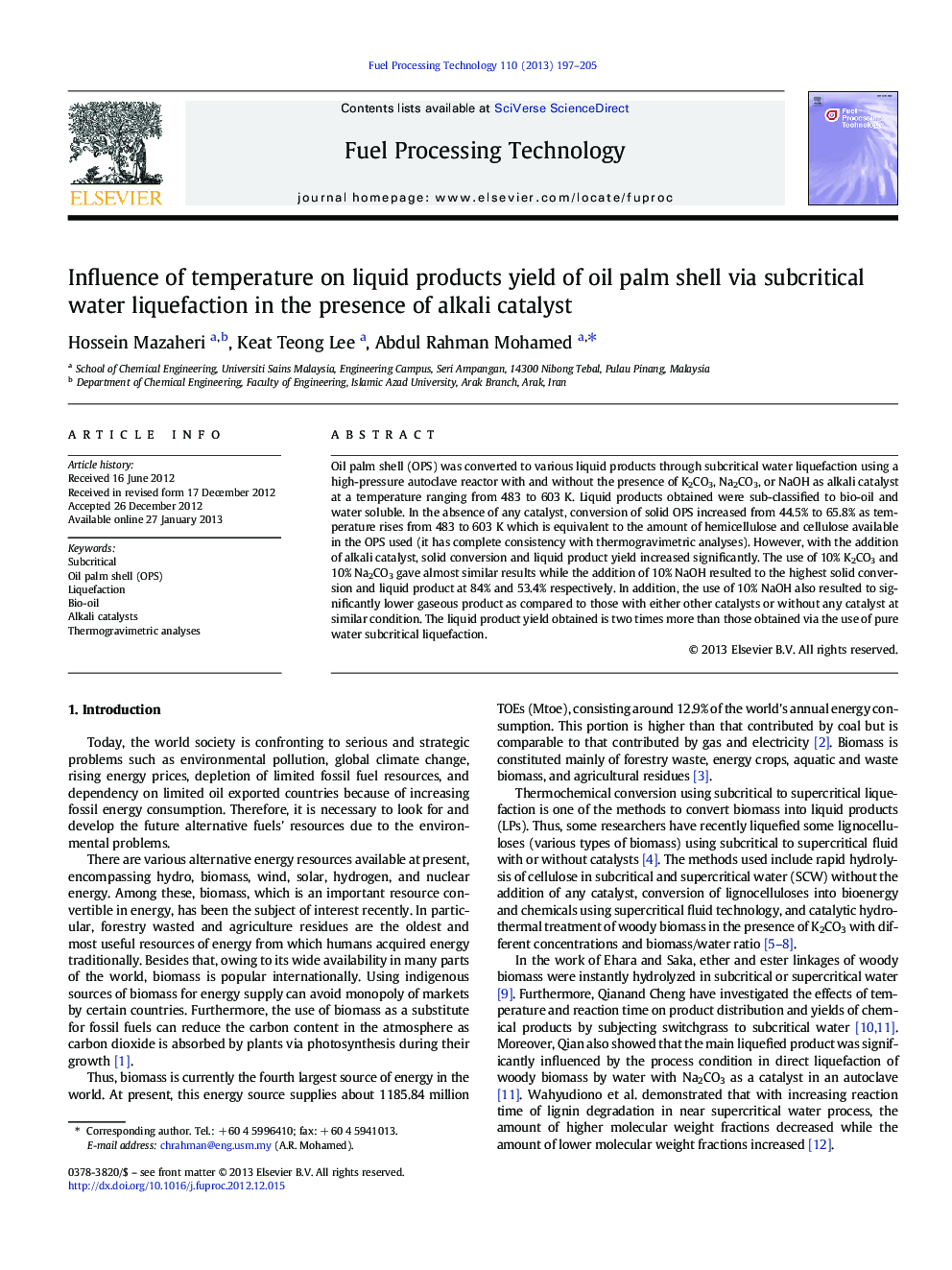| Article ID | Journal | Published Year | Pages | File Type |
|---|---|---|---|---|
| 209998 | Fuel Processing Technology | 2013 | 9 Pages |
Oil palm shell (OPS) was converted to various liquid products through subcritical water liquefaction using a high-pressure autoclave reactor with and without the presence of K2CO3, Na2CO3, or NaOH as alkali catalyst at a temperature ranging from 483 to 603 K. Liquid products obtained were sub-classified to bio-oil and water soluble. In the absence of any catalyst, conversion of solid OPS increased from 44.5% to 65.8% as temperature rises from 483 to 603 K which is equivalent to the amount of hemicellulose and cellulose available in the OPS used (it has complete consistency with thermogravimetric analyses). However, with the addition of alkali catalyst, solid conversion and liquid product yield increased significantly. The use of 10% K2CO3 and 10% Na2CO3 gave almost similar results while the addition of 10% NaOH resulted to the highest solid conversion and liquid product at 84% and 53.4% respectively. In addition, the use of 10% NaOH also resulted to significantly lower gaseous product as compared to those with either other catalysts or without any catalyst at similar condition. The liquid product yield obtained is two times more than those obtained via the use of pure water subcritical liquefaction.
